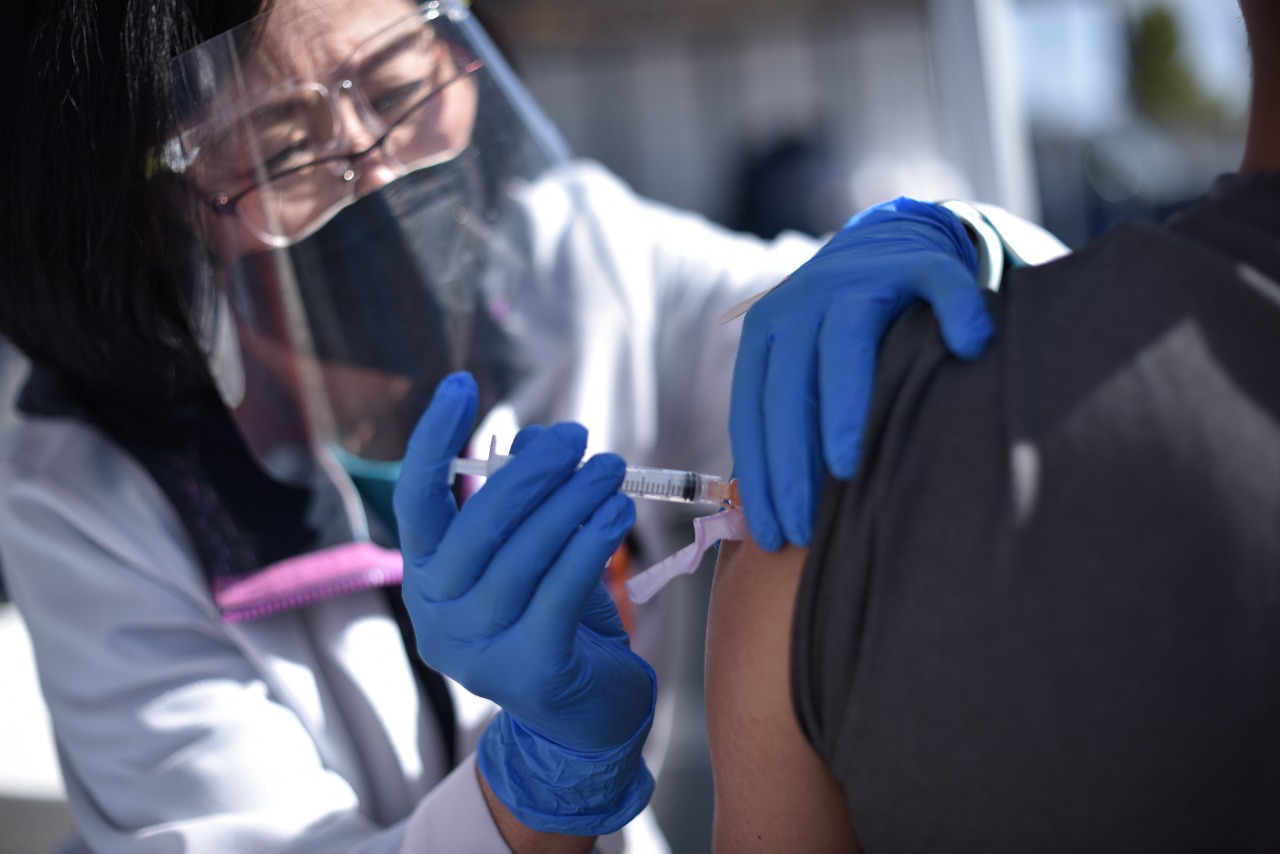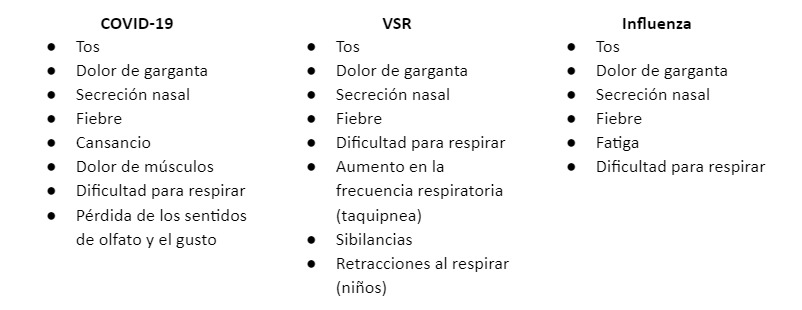
During this holiday period, did you or someone close to you get sick with COVID-19, RSV (respiratory syncytial virus) or influenza? The data shows that the number of people with any of these three diseases has increased this winter season, which is why experts have called on people to keep their distance, continue wearing a mask and, above all, get vaccinated.
Medical experts call the simultaneous rise in cases of these diseases a “triple epidemic,” and the surge in respiratory illnesses threatens to overwhelm already overburdened healthcare systems, with potential gaps in care for vulnerable communities.
The Centers for Disease Control and Prevention (CDC) reported 29,000 COVID hospitalizations in the week ending December 23. The new JN.1 subvariant accounts for almost half of new infections.
In addition, the US is also facing an increase in cases of RSV, a respiratory disease with no cure that is mostly seen in infants and older adults. In the last quarter of 2023 alone, there have been 14 million flu cases with 13,000 deaths, according to CDC estimates.
But what are the symptoms of each of these diseases?

During a media session, conducted by Ethnic Media Services, doctor José Luis Pérez, specialist in family medicine, said that the infections of these three diseases occur, especially in the winter season, when people are forced to be indoors due to inclement weather, and the holiday celebrations.
In turn, he explained that these three diseases are spread by having contact with the body fluids of an infected person, so coughing or sneezing without covering the nose can leave mucous particles in the air and surfaces such as the counter, kitchen utensils, and doorknobs, among other objects.
Thus, when a healthy person touches these infected areas or breathes the air around a person with the disease, the viruses can enter through the nose or mouth.
However, Dr. Pérez stated that it is difficult to know which virus is affecting the patient based solely on the symptoms, so it is necessary to go to the doctor and obtain the necessary tests to confirm the disease.
It should be noted, he said, that most infected people will only have a “cold,” they will feel bad for a few days and will need rest, plenty of fluids (chicken soup), Ibuprofen for pain and fever, and cough syrup. .
Given this, there is nothing like prevention. And to do this, he recommended keeping distance, wearing a mask, and washing your hands constantly; If you feel sick, stay home or, if necessary, go to the doctor, but, above all, get vaccinated against these three viruses.
Those people with chronic conditions such as diabetes, HIV, patients with immunosuppression, cancer or undergoing chemotherapy and/or radiotherapy, must stay up to date with their vaccines, as their condition could develop devastating effects on diseases such as COVID-19, RSV. , or influenza.
Dr. José Luis Pérez recalled that obesity, which is prevalent among the Latino community, is also a great factor in developing serious complications when having COVID-19, as it affects the immune system.
?You most likely will not get infected with the same virus again because your immune system already knows it and has to develop antibodies against it, and that is why about 7 to 10 days later in most cases you stop have symptoms, because your immune system has basically learned to fight it. However, you can contract any of these 3 viruses at any time and even at the same time,” Pérez said.
?Most people who get a cold, so to speak, and then get over it and get infected again, it's usually a different virus that's attacking you, because COVID, influenza and RSV are not the "The only viruses that are circulating during the winter season, there are rhinoviruses, coronaviruses, adenoviruses and all other types of viruses that can cause the same thing," he added.
JN1, the subvariant to monitor
Dr. Ben Neuman, chief virologist at the Global Health Research Complex at Texas A&M University, was punctual and assured that "it really doesn't matter which variant you have when you're lying in a hospital bed or in a medically induced coma. If any of them get past your defenses, the risk of hospitalization and death increases, and vaccines mitigate this. They make it less likely, but it is still very possible?
Currently, the variant that has raised the eyebrows of experts is called JN1, an interesting variant, he said, because until now we had been vaccinated against 3 different strains and had extinguished them all, probably through a combination of vaccination and herd immunity.
However, this is the first time that one of those old strains has escaped, mutated, grown, and returned to cause additional problems. "This virus is very similar to all the viruses that came before, just a little better at growing and much better at evading immune defenses."
JN1 is a relative of an older strain and a descendant of the early Omicron strains, Dr. Newman said, the rest of that family tree has either gone extinct or mutated into the other strains, but at this point, JN1 has become around of 50 percent of the cases that are being reported worldwide.
?It's growing much faster than any of the other strains out there. Now, with this new strain, it seems that the virus has bifurcated, it has divided, there are 2 very different lineages, and one vaccine does not protect against both very well at the moment. There is some protection, but it is relatively little.
Newman said JN1 doesn't grow particularly faster than the other strains. However, he said, vaccination is the best ally to protect yourself, because after a case of COVID, for at least a year, there is a high risk of heart disease and cardiovascular diseases.
The new symptoms reported for JN1 are essentially neurological, he stressed, highlighting anxiety and insomnia as two strong side effects.
VSR, a persistent evil
Dr. Manisha Newaskar, associate professor in the Pediatrics clinic at Stanford University School of Medicine, noted that the typical RSV season runs from October to March in the US.
This virus, he said, is the main cause of bronchiolitis in children. CDC data on RSV in children under 5 years of age indicate that it causes 2.1 million outpatient visits per year, as well as between 58,000 and 80,000 hospital admissions, and between 100 and 300 deaths per year.
The specialist in pediatric pulmonary medicine specified that infants under 6 months of age have a higher risk of hospitalization, while the highest morbidity occurs in premature infants. In addition to this, immunocompromised people have extremely high risk of morbidity and mortality.
Dr. Newaskar explained that almost all children become infected with RSV before they turn 2 years old, and it is spread through contact or droplet transmission.
This triple pandemic has a way to control itself, and it is, for the most part, through basic measures such as social distancing, use of masks, and yes, being up to date with the relevant vaccines to prevent diseases from leading to serious consequences, they agreed. The experts.
You may be interested in: Latinos, the ones with the lowest percentage in San Mateo County of being up to date on COVID-19 vaccination


